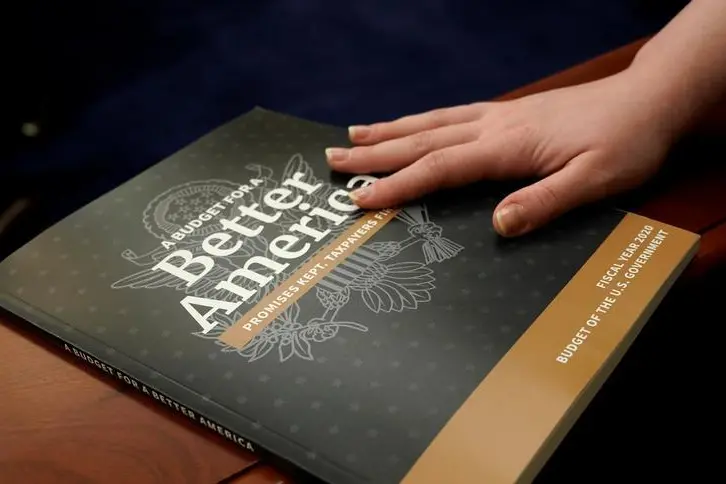PHOTO
NEW YORK - The Wall is back. More funding for a barrier on America’s southern border is included in U.S. President Donald Trump’s proposed budget for fiscal year 2020 and beyond, along with a boost for military spending and cuts for most everything else. It’s probably dead on arrival in Congress, where Democrats control the House.
Still, the White House budget – totaling $4.7 trillion for the fiscal year starting on Oct. 1 – is a statement of position, and highlights where some of the fights will take place. Among his symbolic stances, the president is asking for $8.6 billion for the border wall, more than the request Congress rebuffed earlier this year.
The bigger picture doesn’t bear much scrutiny. Trump wants to hike discretionary defense spending by more than $50 billion next year alone. Over 10 years, the military gets $500 billion more than the current baseline – more than offset by trillions in cuts in Social Security, healthcare subsidies and other government programs. The United States already spends more on defense than China and the next six countries combined, according to the Peter G. Peterson Foundation. And while the U.S. healthcare system is inefficient, it needs radical reform, not just cuts.
Some of the cost reductions are dog whistles for Democrats, such as a nearly one-third cut in the budget for the Environmental Protection Agency. Others involve overhauling – mostly meaning shrinking – welfare in various forms, a practical as well as political challenge.
Meanwhile it all assumes an average of nearly 3 percent annual economic growth to keep tax receipts buoyant. That pace of expansion was achieved in 2018 – the year Republican tax cuts kicked in – but it’s unlikely, by most estimates, to be sustainable. That means White House projections of the federal deficit narrowing to 0.6 percent of output and debt held by the public falling to 71 percent of GDP by 2029 are dubious.
The bipartisan Congressional Budget Office hasn’t reported on Trump’s budget yet, but its own outlook in January foresaw the U.S. deficit at 4.4 percent and debt reaching 93 percent of GDP a decade from now.
Trump may not care about that, but the issue plays into a looming battle over the legal limit on the federal debt, which must be raised some time in the autumn, according to the CBO, to avert a default risk. More to the point, lawmakers have their own priorities, and may see less and less reason to accommodate the president’s.
CONTEXT NEWS
- U.S. President Donald Trump on March 11 called for overhauling social programs that help poor and elderly Americans while boosting military spending and funding a U.S.-Mexico border wall.
- In his $4.7 trillion 2020 budget proposal, Trump called for defense spending to rise by 5 percent to $750 billion.
- Non-defense spending would be held down thanks to steep proposed funding cuts of nearly a quarter for the State Department and almost a third for the Environmental Protection Agency, among others. The White House also proposed reforms to mandatory spending programs such as food stamps to cut $22 billion of outlays.
- Even with the cuts, which the White House said would add up to more than $2.7 trillion in savings over a decade, and an average of 2.9 percent annual GDP growth rate keeping tax receipts buoyant, Trump’s Office of Management and Budget said the federal government’s books would not balance until 2034.
(Editing by Tom Buerkle and Martin Langfield)
(( richard.beales@thomsonreuters.com ; Reuters Messaging: richard.beales.thomsonreuters.com@reuters.net ))
© Reuters News 2019












